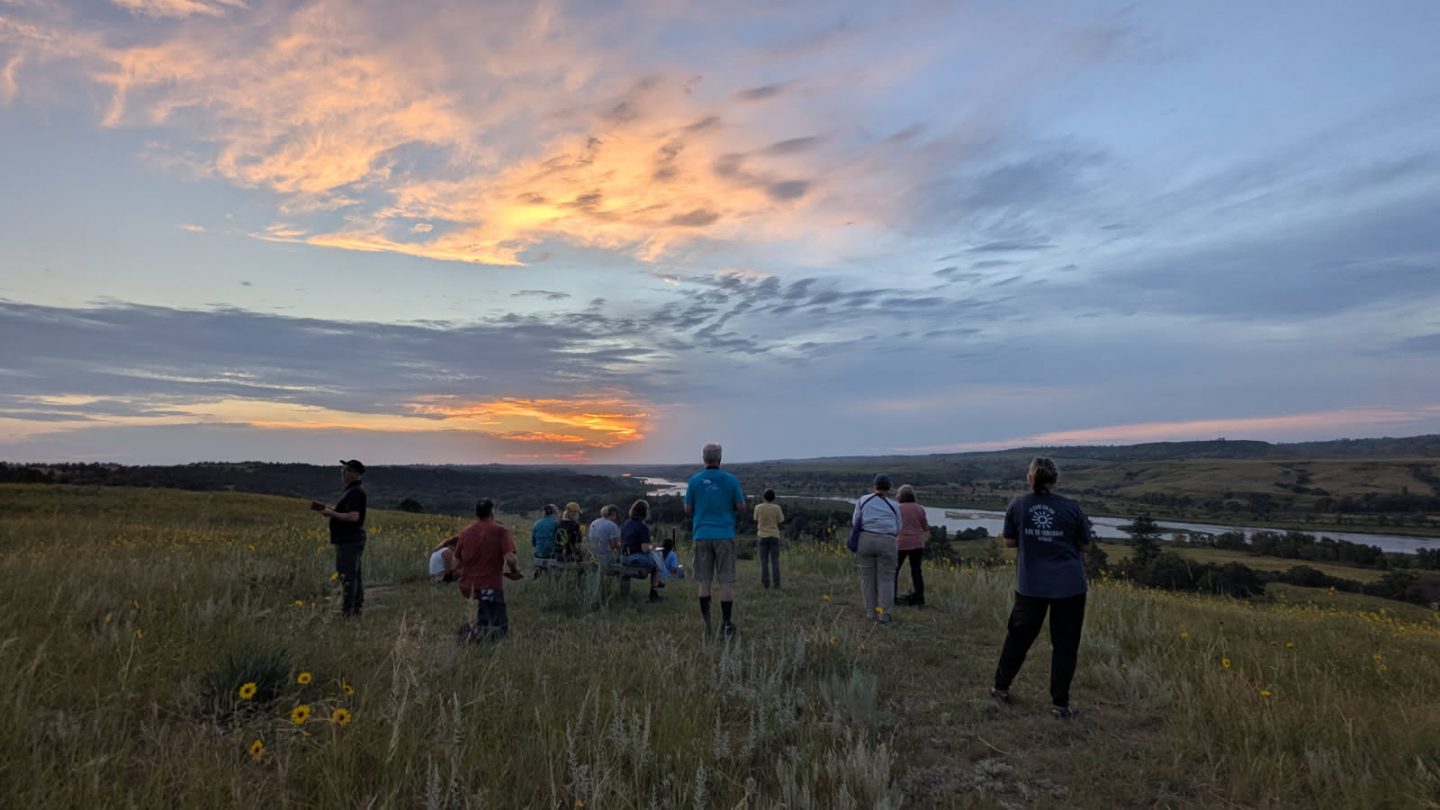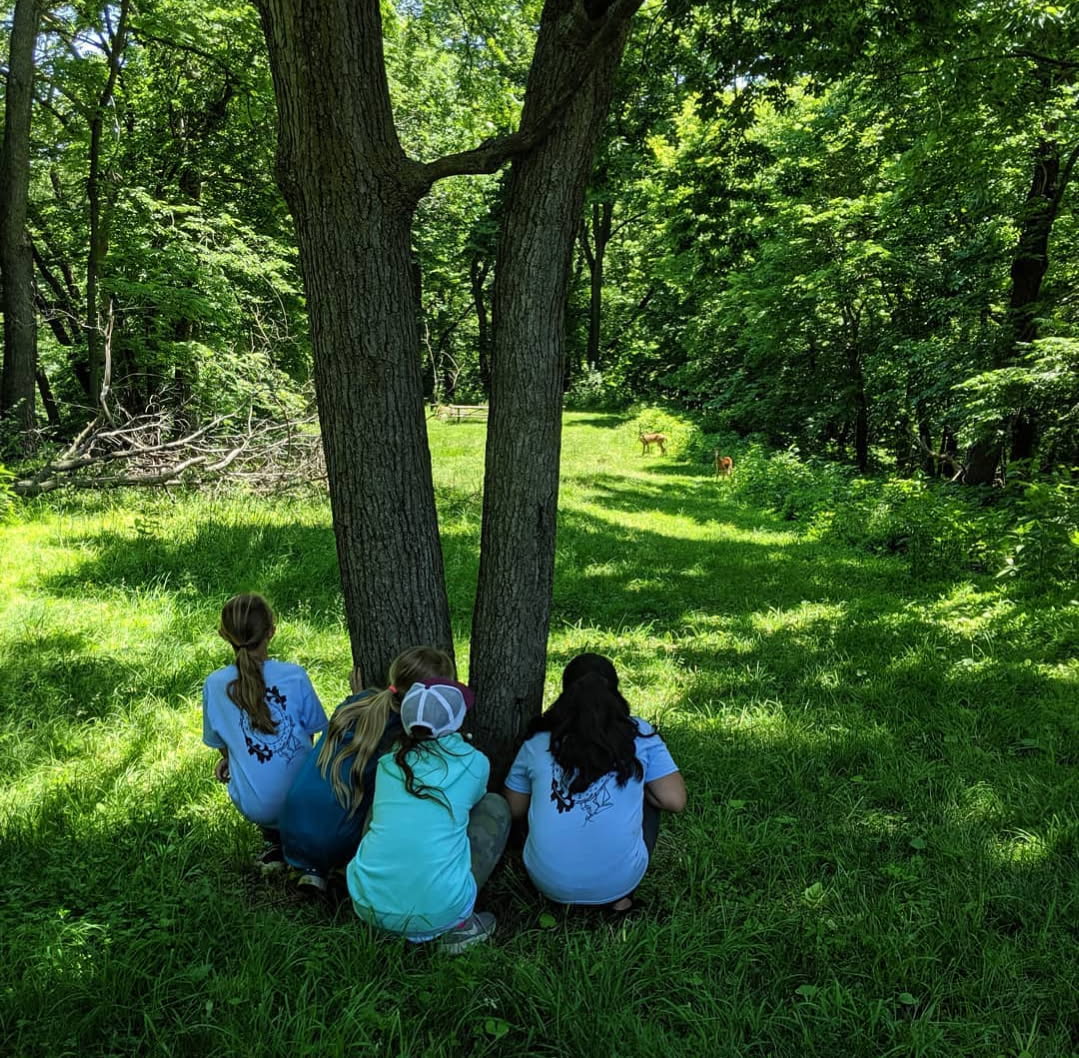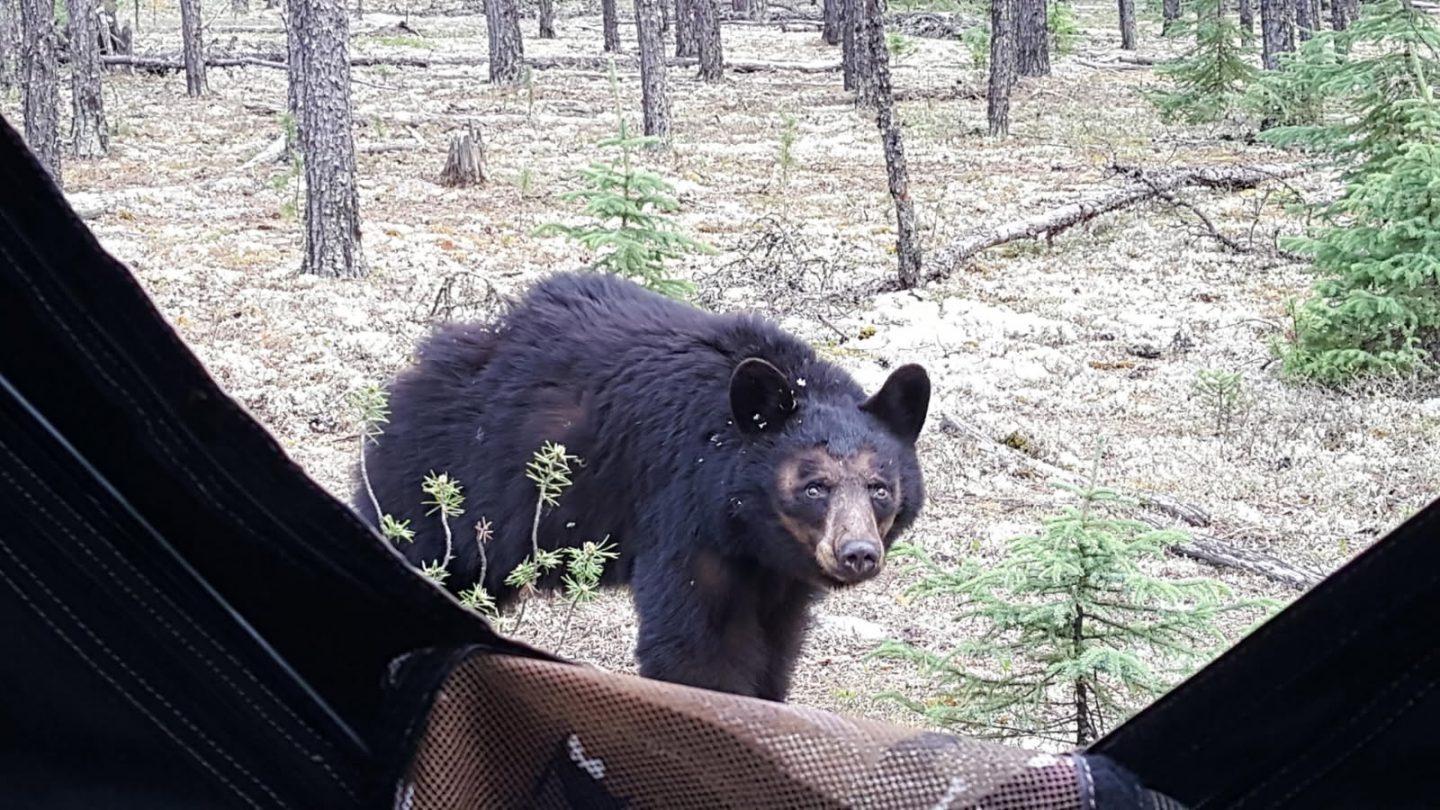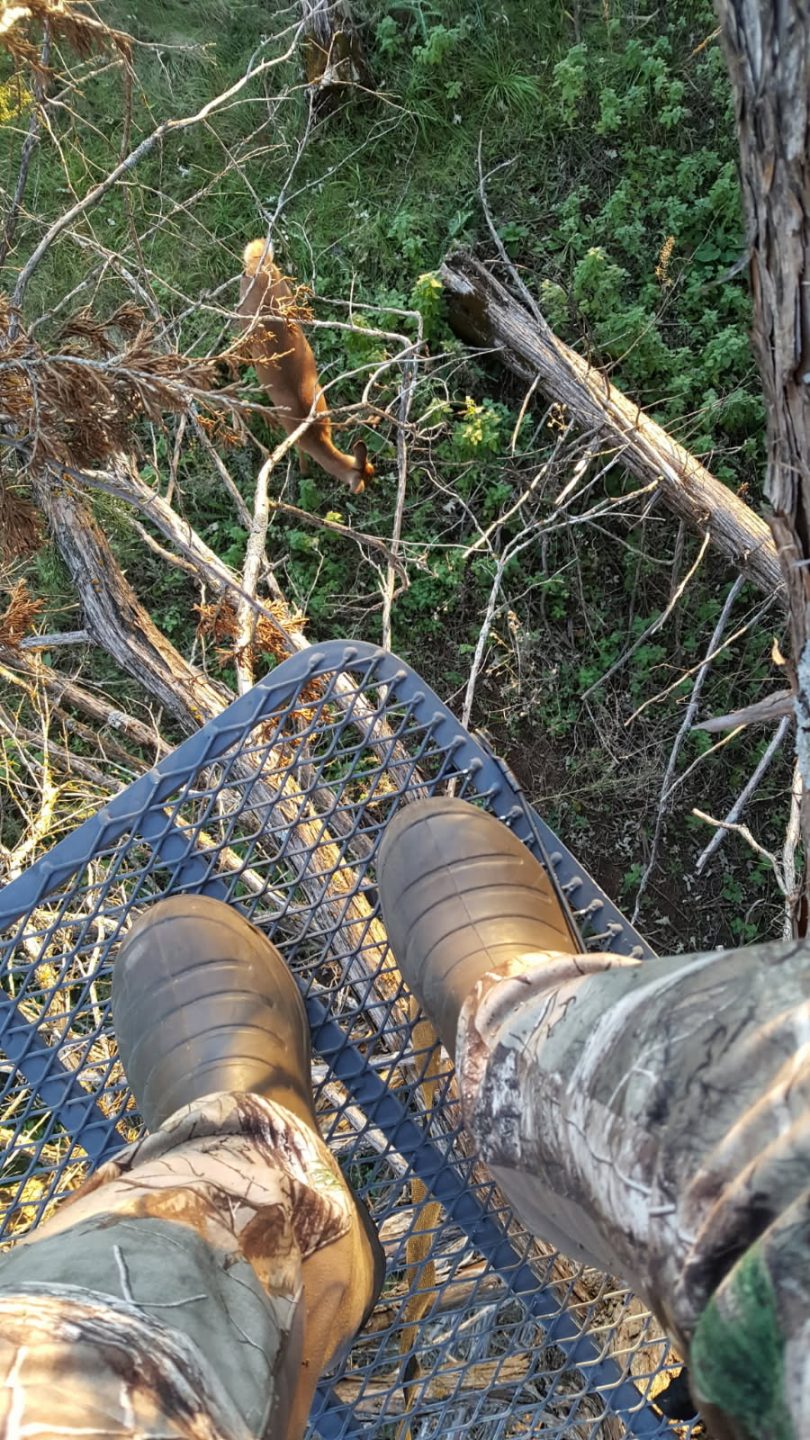
By Grace Gaard
We’re busy, and there’s no slowing down. We scroll our phones and get lost in apps. We spend hours of the day working to support ourselves or care for others, and when we’re home, there is always more to do. There’s an “extinction of experience” happening around us, and if we’re not careful, we might sleep right through it.
Often this way of living feels wrong, making it feel as though we are stuck. So, what does it look like when we choose to hit pause and wake up to the world?
Maybe it’s heading out to your favorite fishing hole. Sometimes, it’s “posting up” next to the fire in your best camping chair. Or sitting in that deer stand in your special tree. Perhaps it’s gliding through the water in your kayak or coasting down the trail on your mountain bike.
Time slows down in these spaces, and the curiosity we experience makes us feel more alive and aware of the life around us. Pausing in nature provides opportunities for healing, awe and gratitude.
So how can we practically access these moments of slowness in our busy lives? We can’t always run out with the boat. It’s not always hunting season. Sometimes, money can be tight.
Thankfully, living in Nebraska means that nature is never too far off, even in our cities — whether it’s on your front porch with a potted plant, a neighborhood park, finding life inside a crack in the sidewalk, a school field, nature center, community garden or a backyard. We’ve got options that are close by and free.
One of the best ways to pause in nature is through an activity called a sit spot.

Sit Spot
A sit spot is a place in nature that is personal or becomes personal. It’s a place you return to over and over. A space of stillness and quiet. Much like a friendship, the more time you spend in this place, the more your relationship grows to one of comfort, built upon the trust that comes from spending intentional moments together. Your sit spot is the home base from which you begin to explore, learning to simply be on your own in nature and make new discoveries, as outlined in the book “Coyote’s Guide to Connecting with Nature.”
My sit spot has changed over the years, but I have vivid memories of when it was in my own backyard. I’d sit in the early morning before school, surrounded by flowers that my mom planted, watching the tiny worlds of ants and bees marching on around me. I remember one particular morning, when I was sitting there alone, a hummingbird suddenly appeared before my eyes. Hovering in front of my face, it looked right at me. Time slowed down as we took in one another. It felt like magic to connect with this creature that didn’t have to stop and acknowledge me, yet did, bringing me into its world.
Later, I began to explore my neighbors’ yards and recognize plants and understand the rhythms of the birds. I’d play games with the other kids in my neighborhood where “survival” meant staying still, hidden and quiet. Although my motivations were different as a child, the stillness remained. As I entered high school, I worked at a summer camp where I passed on these skills to my campers, playing capture the flag with stealth and learning how to move through the natural world as if you are part of it.
After college, I worked at Fontenelle Forest as a naturalist, and one of my all-time favorite things to do was lead summer camps. These weeks of warmth and exploration were where we had the chance to build relationships with one another and the natural world.
On Mondays, we would welcome a new group of kids who were often quiet and reserved. Throughout the week I would have them find their own sit spots, and I encouraged them to take the time to sit and be still alone among the trees. We’d revisit the spots throughout the week, and by Friday, you’d never believe this was the same group of kids. We created a sense of incredible belonging in the forest among the bugs and with each other.

It’s Different for Everyone
I fully know that not everyone’s experience in nature looks like this. We’re in a time when it’s easy to feel divided or labeled. Hippie versus hunter. You get the picture.
But I believe that the feeling of time slowing down outdoors is universal. I find there are far more similarities between us than we may initially think, and I believe the sit spot is one we’ve all experienced. Though I don’t hunt, I have immense respect for those who do.
Have you ever sat in a deer stand waiting for that perfect moment? What happens as you wait? My coworker and friend Christy Christiansen is an avid hunter, and she described to me the moment when she watched a bobcat stalk a rabbit from her tree stand. She also shared:
“There was one time a bear got so close, she stuck her face in the blind that I was sitting in. Another time, a large hog got a little too close for comfort while I was hidden in some brush. I’ve watched animals be curious about you. Like the deer that licked the rope hanging down from my tree stand or the squirrel that ran down my arm and didn’t realize I was there.”
I think these examples of wildlife encounters show us that other living beings around us take notice, too. How different would our interactions with animals be if we spent more time in their world instead of our own?

The Science
If I haven’t yet convinced you that a sit spot is worth trying, then maybe the science behind it will persuade you. Ecological and psychological research confirms that time in nature can have a positive impact on our well-being.
- Awareness. Taking time to visit a sit spot is first and foremost about paying attention, which leads to curiosity and inquiry. You want to know more, and you’re motivated to learn because it’s relevant to you. In many ways, this is leading you into the world of science and exploration, according to Dave Strich in his paper “Reflective Sit Spots.”
- Connection to place. Understanding the patterns of nature is another outcome of taking time in a sit spot. You begin to gain an understanding of the other living things that exist around you, and this leads to knowing more about their behaviors or what they require to survive. Eventually, we begin to recognize how our decisions might impact the living beings around us and how we’re all connected, wrote Strich. Over time, you may even begin to notice changes related to weather and how it impacts the species you see. Our observations become data points that lead us into advocacy.
- Growth and reflection. Research also confirms that sit spots are filled with moments of self reflection and exploration. They provide us with much needed slowness to think and understand who we are. Sit spots can also give us much needed time on our own without a phone in hand. Often, we return from these solo experiences with renewed energy to engage with the world, explained Strich.
- Mental well-being. Research tells us that our mental well-being improves immensely from time spent grounding ourselves in nature. A recent study measured changes in stress before and after a mindful walk in nature and the results indicated that even these brief moments of awareness and slowness improved stress and ruminating thoughts.
- Belonging. Time spent in nature can lead to a sense of belonging in all of us, and researchers are beginning to find ways of measuring these experiences. One such study even highlights that shared time in nature increases feelings of social connection as well as nature connection. Sit spots can be done in groups, where everyone returns to reflect on this shared but silent experience together.

Find Your Spot
So this invitation to connect with nature, and ultimately ourselves, it always stands. It’s always there and is waiting for us to accept it.
What could a sit spot look like for you?
You can take a chair with you, or choose to stand, or even lay on a blanket in the grass. You can even be on your couch looking out at a bird feeder.
If you’re like me, you might struggle to make it to a sit spot regularly. But maybe we can all try setting an alarm on our phone to remind us to get out there, even just for five minutes.
Bring a small journal with you if that’s helpful. Write or draw about what you notice and wonder. There are so many ways you can approach it, and that’s the beauty of it.
As time marches on, I hope we all take our chances to slow down. Whether that’s tucked away in the garden or out in a tree stand, I think we all know that time in a sit spot will always be time well spent.
